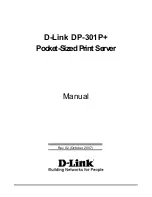
VPort 2110 User’s Manual
Introduction
1-6
10/100 Mbps Ethernet port
Use a UTP category 5 cable shorter than 100 meters to connect to an Ethernet network. Once the
Ethernet connection is successfully established, the Video Server will use the Ethernet interface
instead of the modem attached to the COM port.
RS-232 COM port
The RS-232 serial port can connect to a modem, or you can use the included null modem cable to
utilize a dial-up network when Ethernet is not available
.
If the Video Server is connected to the
network via the Ethernet interface, you can use the RS-232 serial port to control a PTZ camera.
General I/O terminal block
+ Data+
COM
RS-485
- Data-
NO Normal Open
Max. 1A, 24 VDC or 0.5A, 125 VAC
Relay
Output
C
COMMON
Short with Normal Close at the initial state
- DI-
Digital
Input
+
DI+
Max. 50 mA, 12 VDC
The Video Server provides a very flexible general I/O interface that can be used with security
devices, such as sensors, alarms, lighting fixtures, or door locks. The general I/O terminal block
has six pins for device control. These pins can be divided into two categories based on the
interface being used (RS-485 or DI/DO).
RS-485 COM
If the device (such as a PTZ camera control) connected to COM has an RS-485 interface, wire the
RS-485 Data+ and Data- control lines to COM RS-485’s “+” pin and “ –” pin.
ATTENTION
Since RS-485 COM and RS-232 COM share the same UART chip, either RS-485 or RS-232 (but
not both) can be used.
Digital Input/Relay Output
VPort 2110 Video Server provides one digital input and one relay output. The Digital Input’s “+”
pin and “-” pin can be connected to an external sensor to monitor the voltage according to the
programmed scripts in configuration (see the “Command Script for DI/DO & Camera’s Actions
Setting” in Chapter 5). The Relay Output’s “NO” pin and “C” pin can be used to turn an external
alarm on or off.













































